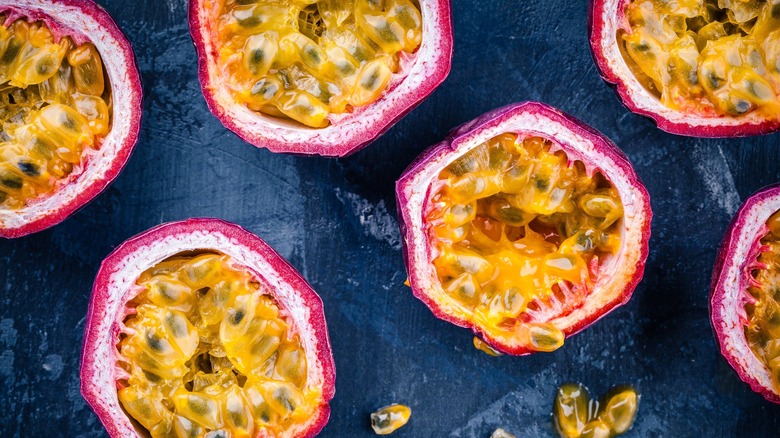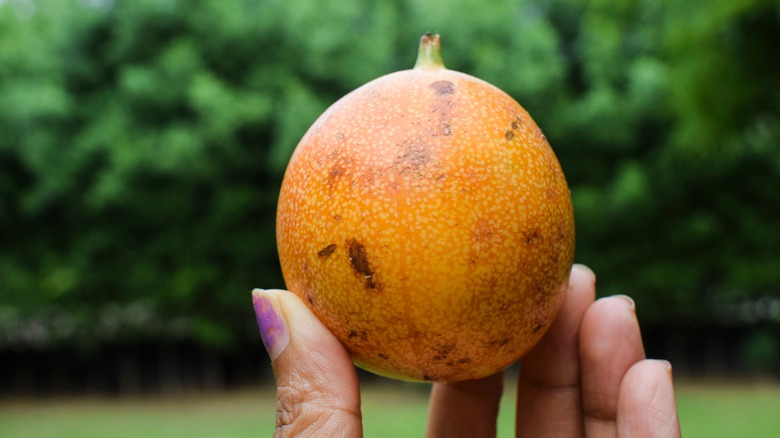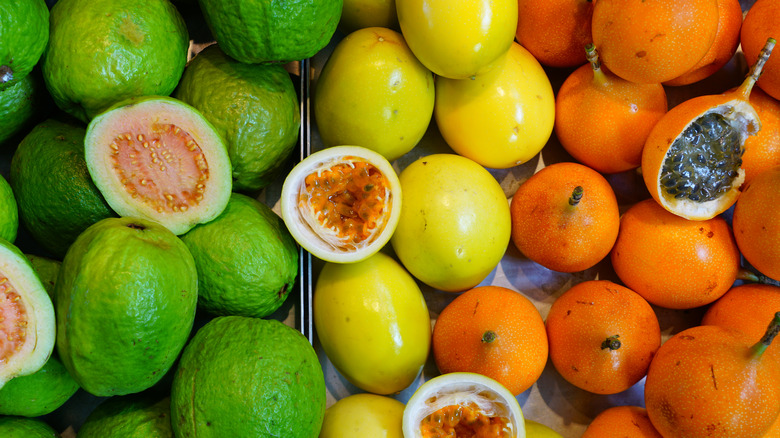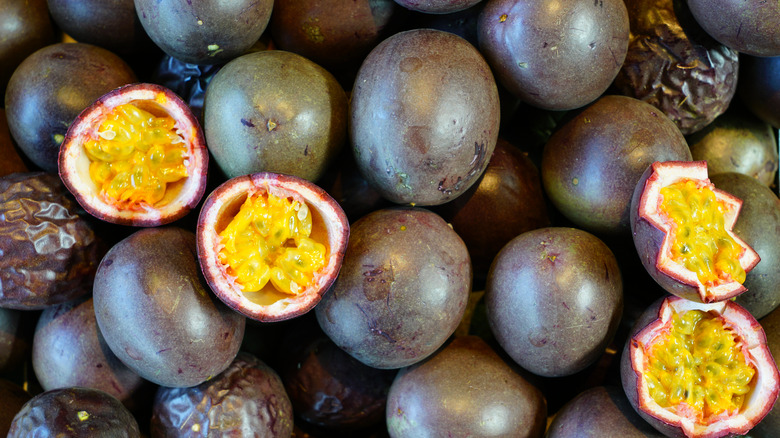The Best Ways To Tell Passionfruit Is Ripe And Ready To Eat
The mere mention of passionfruit alone could send you into a trance that places you on the islands of a vast tropical oasis — or at least someplace with sunshine and a body of water. While passionfruit may be best known as a juice, it typically has deep purple or red-colored outer rinds that withhold their bright yellow jammy centers, according to Food Print. Their surprisingly sweet and tart flavor makes them the star of a range of beverages and foods that add a tropical twist to your everyday indulgences.
From salad dressing to smoothies, as a side on our summer charcuterie boards or as a topping on our breakfast chia pudding, the taste of passionfruit offers a moment for you to get away — that is, if it's ripe. Otherwise, an unripe passionfruit could be a sour-tasting reminder of reality. Before you start googling homes in Hawai'i, where the fruits are in season all year long (via Food Print), check out these ways to tell whether or not a passionfruit is ripe and ready to eat.
Check the weight
You can decipher whether or not a passion fruit is ready to eat without even looking at one. It's safe to say that none of our tropical fantasies involve cutting into a dry, airy, or sour passionfruit. According to Fine Cooking, you can tell a fruit is ripe by its weight. By simply holding one in your hands, the weight alone will determine whether or not its goopy, sweet center has developed.
Live Eat Learn says that if a passion fruit is lightweight, its juicy center hasn't formed — which is essentially the fruit's entire point. Like watermelon, tomatoes, and grapefruits, a heavy fruit is usually a good one. Ripe passionfruit will feel heavy for its size (via Food Print) and will have a little give when you squeeze it (via Better Homes and Gardens). When held in your hands, it will feel plump and full — a tell-tale sign that your passion fruit is adequately juicy and ready to eat.
Look at the color
When finding a ripe passionfruit, look at its color. These tropical fruits come in a rainbow of shades, including purple, yellow, orange, and red. However, a ripe one will be darker in tone (via Live Eat Learn) and not green. Although a green passionfruit might technically be edible, its flavor will be much more tart than you would like (via Food Print).
If this is the case and your passionfruit is green, The Mom 100 suggests that you give the fruit anywhere from three to seven days to ripen and achieve optimum color. Food Print also advises that you leave an unripe, green passionfruit out of sunlight and at room temperature. As it starts to become ripe, the skin will slowly soften. So when searching for a ripe passionfruit at the grocery store, you should stick to buying dark purple, dark yellow, orange, or red fruits.
Feel the texture
Usually, when you shop for fruits, you look away from the wrinkly and soft pickings in the assumption that they've gone bad or are over-ripe. However, you should unlearn this habit when shopping for passionfruit. A ripe passionfruit breaks all the rules, and they taste even better for it. When a passionfruit is very ripe, it will look wrinkly on the outside, according to Better Homes and Gardens. The fruits that are slightly wrinkled are the sweetest,
As Live Eat Learn explains, the wrinkled skin results from the fruit preparing to sow its seeds, causing its skin to weaken. This is a sign that the fruit has reached its peak ripeness and should be cut into ASAP. It's the perfect time to scoop out the sweet insides and stir them into your sparkling water — or a French 75 cocktail. While you drink, you can close your eyes and pretend you're someplace tropical, even if you're just in your backyard.



